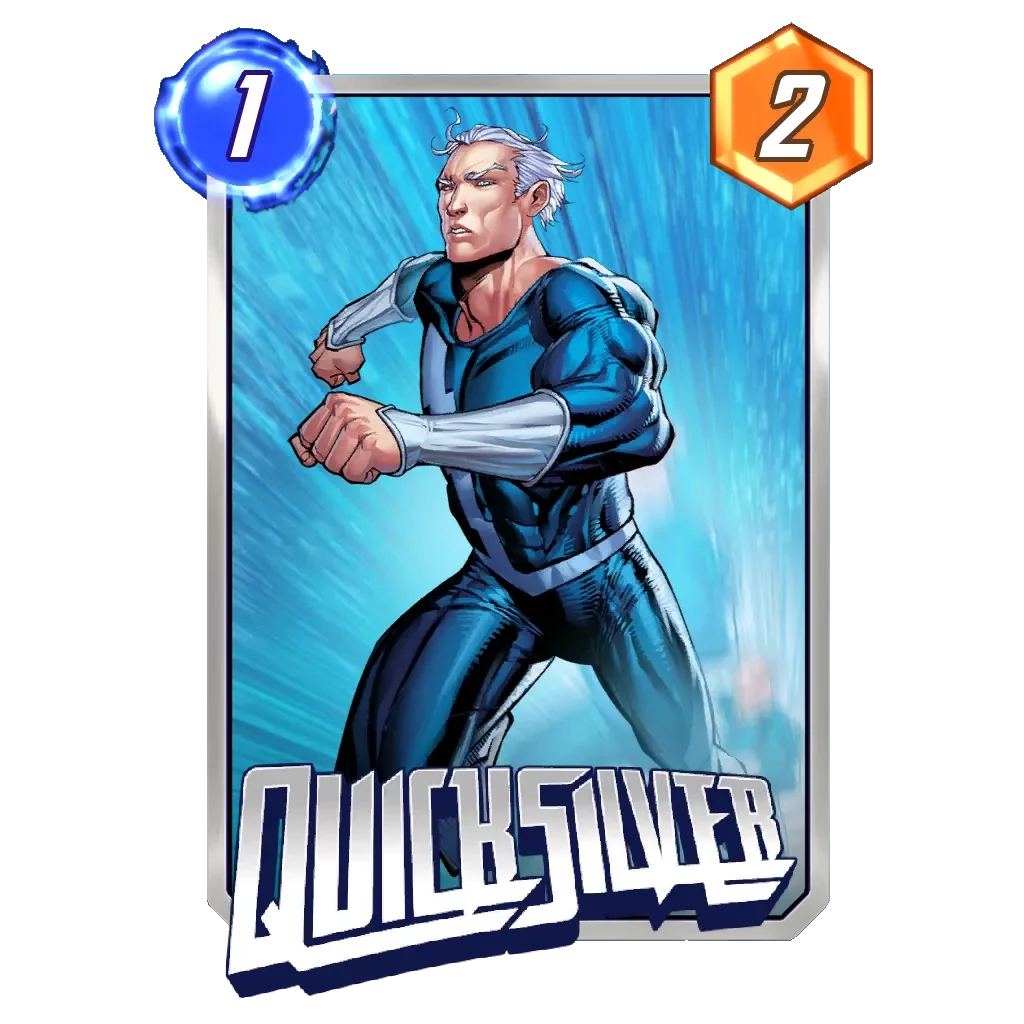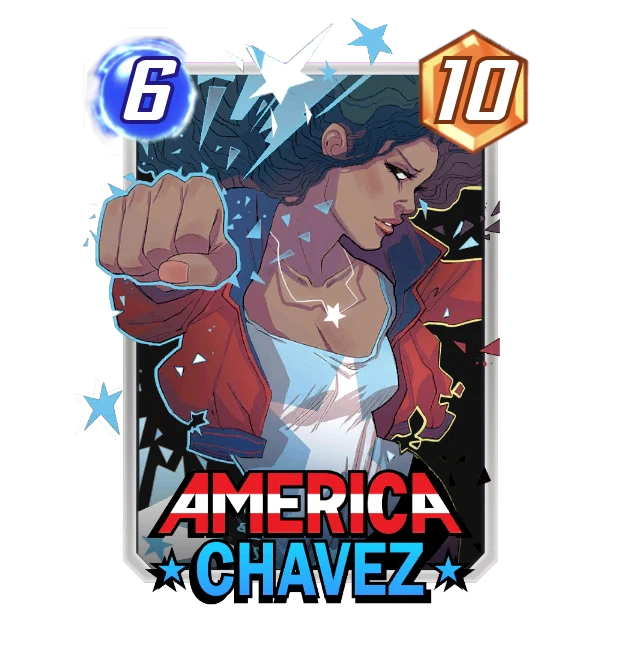Marvel SNAP is the latest mobile card-based game that’s sweeping the world! Leveraging the IP of your favorite Marvel superheroes, Marvel SNAP lets you play with all of the familiar faces that you’ve grown to love in Marvel comic book history.
Today we’re going to talk MATH. Any time you’re playing card games, the discuss of odds is bound to come knocking. Specifically for Marvel SNAP, there are a few cards that guarantee themselves to come out on specific turns if you run them in your deck: Quicksilver, Domino, and America Chavez. But, are they worth running?
Let’s do the math and find out!
Marvel Snap Guaranteed Cards
There are three cards that are guaranteed to come out on specific turns: Quicksilver on turn 1, Domino on turn 3, and America Chavez on turn 6. The math that we’re going to be running through applies to all three, but in my opinion America Chavez is the only one that you should consider running in a standard deck. Why is that?
The difference with America Chavez is that she is going to allow you to have a better curve, meaning that your odds of drawing the cards that you need prior to turn 6 go way up. And, if your combos don’t line up, then at least you have a respectable 9-power 6-drop to play on the final turn.
In a way, America Chavez does what some people call, ‘thin your deck’. Think about it this way, if you have a single card that you want to draw, do you want to draw that from a deck of 50 cards or a deck of 10 cards? Obviously drawing from a deck of 10 cards is more advantageous because the odds are so much better.
We’re doing the math to show this on a smaller scale.
Marvel Snap Hypergeometric Distribution
The type of distribution that we’ll be using is called the Hypergeometric Distribution. Essentially, this allows us to determine how many success (drawing a card) we would get in a population (deck size) given the sample size (number of draws). In this case, we can compare the difference between running a card like America Chavez vs leaving it out of the deck.
There are numerous online calculators that you can plug this information into, but the math is the same. Just do a search for MTG Hypergeometric Distribution Calculator and you’ll find a ton of hits to get you the results you’re looking for. Here’s a link to Aetherhub, which has a really good one with some great explanations.
Here are the main inputs of the hypergeometric distribution and how you can use it in Marvel Snap:
- Population Size – how many total cards are in your deck?
- Sample Size – how many cards are you drawing?
- Successes in Population – how many applicable cards are in your library total?
- Successes in Sample – how many of those applicable cards do you want to draw?
In Marvel Snap, we need to figure out the odds of drawing a card that we want before turn 6 to see if America Chavez is worth running. If we have America Chavez in our deck, we KNOW that she isn’t coming out before turn 6. Therefore, we essentially are running an 11-card deck instead of a 12-card deck.
Without America Chavez:
- Population: 12
- Sample Size: 8 cards (you would draw 8 total cards through turn 5)
- Successes in Population: 1
- Successes in Sample: 1
Odds of drawing the card we need: 66.7%
With America Chavez:
- Population: 11 (turn 6 we know what we’re getting)
- Sample Size: 8 cards (you would draw 8 total cards through turn 5)
- Successes in Population: 1
- Successes in Sample: 1
Odds of drawing the card we need: 72.7%
What does this mean? If there’s one card that you really want to draw, maybe a big bomb or key piece, you have 6% better odds of drawing that card when running America Chavez. That’s nothing to shake a stick at, right?
As I mentioned up towards the top, Domino and Quicksilver don’t really equate out the same way. For example, if you were running a Zoo-style deck with Kazar, there are probably some other one-drops you’d rather play on turn 1 than Quicksilver. Also, you’re probably running more one-drops than the average deck, so you already have decent odds of having one in your starting hand to play right away.
You can use hypergeometric distributions in Marvel SNAP to figure out odds of other stuff to happen too. For example, you might want to see the probably of having two specific cards in your hand as far as combos are concerned. Or maybe you want to know the probability of having a combination of a couple cards.
All of that can be done with hypergeometric distributions. There’s a reason why it’s used so commonly in card games, because the analysis can help you when crafting decks and fine-tuning them towards perfection. There’s a whole aspect of these distributions that involve the complementary probability as well, which basically means that you calculate the opposite of the thing you want to happen, and then take 1 minus that value to get the odds of the target scenario.
Obviously Marvel SNAP is a bit different because you can only have a single copy of any given card in your deck. But ultimately, that just makes a lot of the distributions simpler.
Marvel SNAP: It’s a…SNAP!
Hopefully you’re all enjoying Marvel SNAP as much as I am! We’ll be back next week for Marvel Snap Mondays with a brand new topic to talk about!
Check out Marvel SNAP, and play with your favorite comic book characters!



